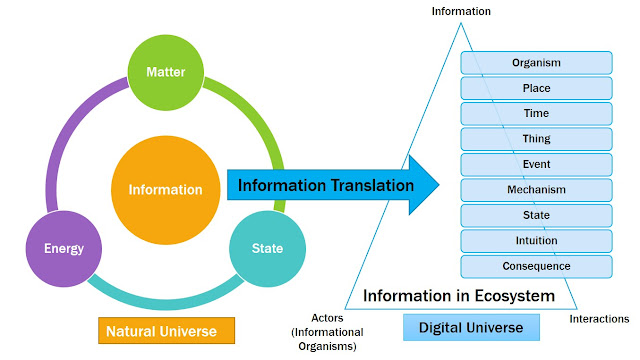How to define information or data strategy?
Information or data strategy is a part of the overall corporate or business strategy. Information (including data) is an important strategic business asset. Thus, information assets should be managed and treated in the similar way as we manage other business assets. An actionable information strategy is required to for the effective handling of information across the enterprise, irrespective of their size, for achieving the business goals and reducing risk including compliance to regulatory requirements and standards.
This post provides and discusses a simple and practical template for defining the information strategy as a part of the business or cooperate strategy. Information strategy can be defined at the ecosystem, enterprise, business function, business area or capability level as appropriate to your context and needs. Information strategy has following key 8 elements (Figure 1): Mission & Vision, Levers & Value Driver, Goals & Objective, Strategies & Tactics, Change, Strategic Architecture, Roadmap and Strategic Governance.
Mission & Vision
It defines the purpose and aspiration vison for handling the information within the given context and scope.
Levers & Value Drivers
It defines the levers, such as key capabilities; and value drivers, such as increase revenue, reduce cost, reduce risk, increase resilience to support the mission and vision.
Goals & Objective
Vision is further decomposed into information goals and related objectives. This could be further organised into different goal themes or areas.
Strategies & Tactics
Strategies and tactics are defined using the information levers for achieving he information goals and objectives.
Change
Threats and opportunities including information maturing and related performance levels are defined for the current and target states. Here, the focus is: What and where do we need to change?
Strategic Architecture
A high-level target state strategic information (data) architecture is defined to address the identified changes in alignment with the strategic goals. It also includes information subject area model, lifecycle, value chain, and operating model.
Roadmap
Strategic initiatives are configured into a roadmap for iteratively and incrementally achieving the desired information state.
Strategic Governance
Guiding principles are defined. Monitoring and adaptation mechanisms are established to oversee and facilitate the information strategy execution.
This post provides a quick overview of the information or data strategy template and its elements.




Great work Asif thanks for sharing
ReplyDeleteWow Asif that is incredibly useful I think. Very relevant to where my PhD is going, so would like to discuss sometime, but great work in any case.
ReplyDeleteNice Post!!
ReplyDeletePlease Look Here At - In the dynamic business landscape of New South Wales (NSW), understanding the true value of your assets is more critical than ever. Whether you're planning to sell, merge, secure finance, or ensure compliance with accounting standards, Business Asset Valuation NSW provides the clarity and confidence needed to make informed decisions.
The best decision-making software I’ve used! Corestrat platform provides deep insights, intuitive interface and helps us stay ahead in a competitive market. Highly satisfied with the results.
ReplyDeleteBest decision intelligence software
Nice Post!!
ReplyDeletePlease Look Here At When it comes to safeguarding your property, one of the most important steps is ensuring you have the right Building Replacement Insurance Valuation Melbourne. Many property owners underestimate the replacement cost of their assets, which can lead to underinsurance and unexpected financial stress in the event of damage or loss.